 Last additions Last additions |

Path to the castle towerGo up the left steps to proceed to the tower.Jul 24, 2005
|
|

Remains of the Ninomaru-mon GateJul 24, 2005
|
|

Tenka Daiichi-no-mon GateThe first gate toward the castle tower.Jul 24, 2005
|
|

Gifu Castle on Mt. Kinkazan as seen from the Tokaido Line train. The castle can still be seen from many kilometers away. It is one of the symbols of Gifu city.Jul 24, 2005
|
|

Gifu Castle ropeway boarding areaJul 24, 2005
|
|

Gifu Castle on Mt. Kinkazan and ropewayA convenient ropeway makes it a snap to visit the castle.Jul 24, 2005
|
|
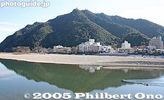
Gifu Castle on Mt. Kinkazan as seen from the Nagara River. In the foreground is Nagaragawa Onsen Spa. Commanding a strategic viewpoint of the entire city, Mt. Kinkazan must have looked like an obvious place to build a castle.Jul 24, 2005
|
|

Romeo and Juliette balconyJul 23, 2005
|
|

Statue of JuliettePeople lined up to pose with the statue with one hand covering her right breast.Jul 23, 2005
|
|

Room adjacent to the balconyThis is the room attached to the famous balcony that anyone can enter. Note that the tourists are always photographing the balcony, so if you're standing there, you'll end up in the pictures taken by all those tourists.Jul 23, 2005
|
|
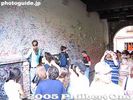
Romeo and Juliette tunnelBefore proceeding to the balcony made famous by Romeo and Juliette, people can write their love messages.Jul 23, 2005
|
|

Inside the Verona ArenaIt was huge. Here, they are preparing the set for one of the nighttime operas (Aida) held in July.Jul 23, 2005
|
|
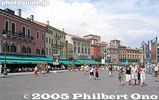
Main plaza near the arenaJul 23, 2005
|
|
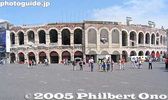
Verona ArenaIt looks smaller than the Rome Coliseum, but what a surprise it was when we went inside.Jul 23, 2005
|
|
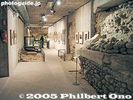
Scavi Scaligeri exhibition roomThe archaeological ruins of the building have been beautifully integrated with the modern exhibition space.Jul 23, 2005
|
|

Gateway to VeronaJul 23, 2005
|
|
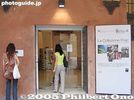
Entrance to Fnac photo exhibition at Scavi ScaligeriThis large exhibition included works by a few Japanese photographers such as Eikoh Hosoe, Takeyoshi Tanuma, and Yoshihiro Tatsuki.Jul 23, 2005
|
|
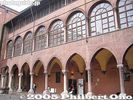
Scavi ScaligeriMedieval palace and archaeological ruins. It has been well-preserved and restored as a huge exhibition space called the Scavi Scaligeri International Centre of Photography. The Fnac Collection photo exhibition was being held when we were there.Jul 23, 2005
|
|

Designer toilet?Jul 23, 2005
|
|
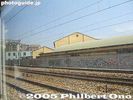
Malpensa Express window view (graffiti)Milan was where I landed, and I took the Malpensa Express from which I saw so much graffiti. My first impression of Italy: There's a lot of graffiti.
I thought it was only along the train tracks, but graffiti is all over the city as well.Jul 23, 2005
|
|
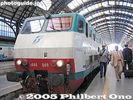
Train at Milan station (front end) just arrived from VeniceJul 23, 2005
|
|
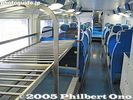
Inside Malpensa ExpressLuggage rack provided.Jul 23, 2005
|
|
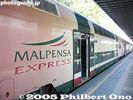
Malpensa Express at CardonaA good way to get to and from Malpensa Airport. Takes about 40 min. The train is double decker. A lot of Italian trains are double decker, but shorter than Japanese trains.Jul 23, 2005
|
|
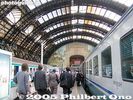
Milan Central StationThis was after the train ride from Venice.Jul 23, 2005
|
|

Red line metroDuomo Station.Jul 23, 2005
|
|

Inside the subwayJul 23, 2005
|
|

Yellow line metroJul 23, 2005
|
|
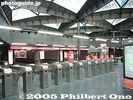
Metro stationAmendola Fiera station on the Red Line. Buying a ticket is easier at a kiosk than with the vending machine written in Italian.Jul 23, 2005
|
|
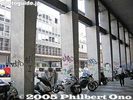
GraffitiJul 23, 2005
|
|

Pay phoneIt took me 30 min. to figure out how to use the pay phone in Italy. First, I had to find a snack bar (not kiosk) that sold telephone cards. I inserted the card, but it was rejected. I inserted the card in all possible ways, but it was still rejected. Finally, an old Italian lady walking by saw my plight and pointed to a corner of the card where I supposed to tear it off. So I tore it off, and finally the phone accepted my card. (In Japan, telephone cards can be inserted as is.)
So I dial the number and waited for the ring tone. But nothing. So I hang up and dial again several times, but the call still didn't go through. Then I noticed a Select Language button on the phone and set it to English. I read the LCD screen and followed the directions. A-ha, after dialing the number, I supposed to press the OK button (like the Enter key on a computer). Finally, my friend answers my call. (We don't need to press any OK button in the US or Japan.)Jul 23, 2005
|
|
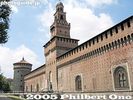
Castello SforzescoFormer fortress now houses a number of excellent museums. Big and very impressive.Jul 23, 2005
|
|
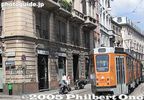
Graffiti on buildings and streetcarsJul 23, 2005
|
|
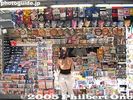
KioskJul 23, 2005
|
|
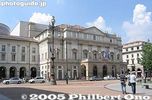
La Scala Opera HouseJul 23, 2005
|
|

SandwichesJul 23, 2005
|
|

Leonardo da Vinci sculpture at Piazza della ScalaThis is in front of La Scala.Jul 23, 2005
|
|

Piazza del DuomoJul 23, 2005
|
|
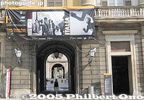
Palazzo Reale entrance to photo exhibitionThe Palazzo Reale happened to have a photo exhibition by Italian photographers.Jul 23, 2005
|
|
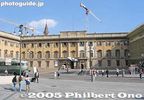
Palazzo RealeNext to the Cathedral is this centuries-old former palace is now a grand exhibition space.Jul 23, 2005
|
|
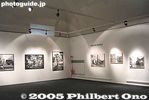
Photo exhibition at Palazzo RealeJul 23, 2005
|
|

Cathedral stained glassJul 23, 2005
|
|

Inside the CathedralJul 23, 2005
|
|

Cathedral pillarsJul 23, 2005
|
|
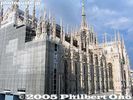
Cathedral sideJul 23, 2005
|
|

Duomo CathedralThe front facade of this symbol of Milan is undergoing restoration.Jul 23, 2005
|
|

Cathedral and Lion with PigeonsJul 23, 2005
|
|

Cathedral and Duomo Metro StationJul 23, 2005
|
|

Cathedral and Piazza del DuomoJul 23, 2005
|
|
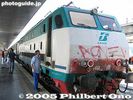
Train to Milan (back end) ヴェネツィアの駅(ミラノへの電車)Jul 23, 2005
|
|
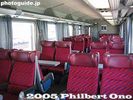
Inside the train to Milan ミラノへの電車Jul 23, 2005
|
|
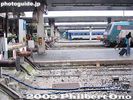
Venice Station train platforms ヴェネツィアの駅のホームJul 23, 2005
|
|

Venice train station ヴェネツィアの駅The walk between the bus station and train station is a little longer than you would like it to be.Jul 23, 2005
|
|
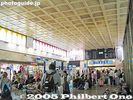
Inside Venice station ヴェネツィアの駅Jul 23, 2005
|
|

Grilled veggiesJul 23, 2005
|
|

Venetian food ヴェネツィアの料理Jul 23, 2005
|
|

University of Venice, Japanese Dept. ヴェネツィア大学の日本語学科Building housing the Japanese Department. It faces a canal.Jul 23, 2005
|
|
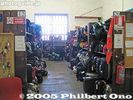
Luggage storage room ヴェネツィアの駅の荷物預かり所Coin-operated lockers were out of order in the station. In the morning at 9:30 am, the line can be long for people wanting to store their baggage.Jul 23, 2005
|
|
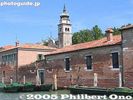
Building along the canalJul 23, 2005
|
|
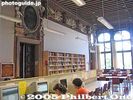
University of Venice library ヴェネツィア大学の図書室Jul 23, 2005
|
|
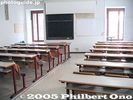
University of Venice classroom ヴェネツィア大学の教室Jul 23, 2005
|
|
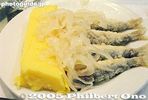
Venetian food ヴェネツィアの料理Jul 23, 2005
|
|

University of Venice ヴェネツィア大学Jul 23, 2005
|
|
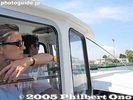
Boat crewJul 23, 2005
|
|

Boat captainJul 23, 2005
|
|
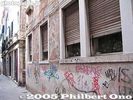
Graffiti even in Venice 落書きThere was graffiti almost everywhere I went in Italy. Sadly, even in Venice.
イタリアは落書きが多い。ヴェネツィアにも結構ある。Jul 23, 2005
|
|
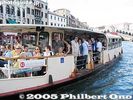
Common boatThis is one of the most common means of public transportation in Venice. Many of the canals have heavy boat traffic.Jul 23, 2005
|
|
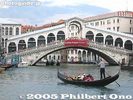
Ponte di Rialto bridge and gondolaJul 23, 2005
|
|
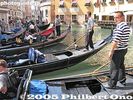
Gondola stationA gondola ride is not exactly cheap, but affordable with 5 or 6 people.Jul 23, 2005
|
|
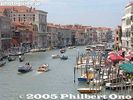
View from Ponte di Rialto bridgeJul 23, 2005
|
|

GondolaJul 23, 2005
|
|

Palazzo Ducale inner courtyardThe Palazzo Ducale next to St. Mark's Square is truly magnificent. The rooms have very ornate paintings and carvings. It was not crowded at all compared with St. Mark's Basilica which was just too crowded with people.Jul 23, 2005
|
|

Grand Canal and Ponte di Rialto bridgeThis is the main bridge crossing the Grand Canal. The middle of the bridge has a row of shops.Jul 23, 2005
|
|
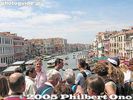
Atop Ponte di Rialto bridgeThis is one of three bridges crossing the Grand Canal.Jul 23, 2005
|
|
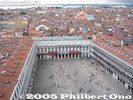
View from Campanile 鐘楼の展望台からの風景The tower provided magnificent views of the square and the entire island of Venice.Jul 23, 2005
|
|

Bell ringing on Campanile 鐘楼が鳴らし始めたWe asked if the bells were actually rung. The answer was yes. And it was to ring next at 6:30 pm. So we waited 15 min., and sure enough two of the bells started to ring, jerking back and forth. It wasn't as loud as you would think.
鐘楼の上にいたとき、偶然に鐘が鳴らし始めた(午後6:30).Jul 23, 2005
|
|
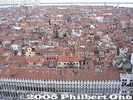
View from Campanile 鐘楼からの風景Jul 23, 2005
|
|
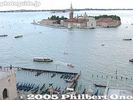
View from Campanile - San Giorgio island 鐘楼からの風景Jul 23, 2005
|
|
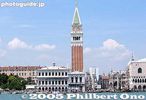
St. Mark's Square and CampanileJul 23, 2005
|
|
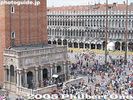
St. Mark's Square and entrance to the CampanileIt doesn't take long to go up the elevator to the top of the tower. It was surprisingly uncrowded, unlike St. Mark's Basilica where there was a long line at all times.Jul 23, 2005
|
|
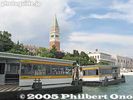
Boat landing for St. Mark's SquareJul 23, 2005
|
|
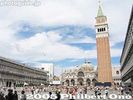
Piazza San Marco or St. Mark's Square ヴェネツィアの中心であるサンマルコ広場The heart of Venice and where all the tourists are. The square is lined with shops and restaurants. Public toilets cost money.Jul 23, 2005
|
|

Pay phones housed by birds, by Sergio VegaOutside the Arsenale there were these pay phones.Jul 23, 2005
|
|
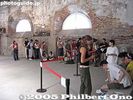
Line to enter Mariko Mori's UFO UFOに入るために並んでいるJul 23, 2005
|
|
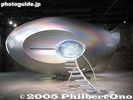
Mariko Mori at the Arsenale 森 万里子のUFOHer trademark UFO.Jul 23, 2005
|
|
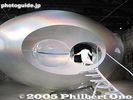
Mariko Mori 中にも入れるThree people at a time could go inside and watch some kind of video.
三人が入れる。Jul 23, 2005
|
|
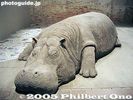
Hippo in the ArsenaleJul 23, 2005
|
|
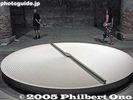
By Mona HatoumThe center bar rotates around as it makes ridges and flattens them.Jul 23, 2005
|
|
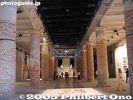
Inside the ArsenaleJul 23, 2005
|
|
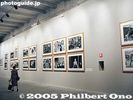
Photo exhibition in ArsenaleJul 23, 2005
|
|
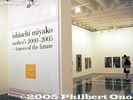
Japan Pavilion showing Miyako Ishiuchi 日本館は、30年ぶりに写真家が出品:石内都The last time a Japanese photographer held a solo show at the Venice Biennale's Japan Pavilion was in 1976 with Kishin Shinoyama. Almost 30 years later, we finally have a photographer as Japan's featured artist. She is Miyako Ishiuchi.
Her exhibition was titled: mother's 2000-2005--traces of the future. This is a series of photos of her deceased mother's personal effects--clothing, lipstick, kimono, etc.
A catalog of the same name was also published and sold in the pavilion. They also had sample copies of her other photo books (all in Japanese), but only the catalog was for sale.
写真家が単独で日本代表となるのは、1976年の篠山紀信以来です。今回の第51回のヴェネツィア・ビエンナーレに石内都が出品したのは、2000年に亡くなった母の遺品を撮った「Mother's」シリーズ。服、ヘアブラシ、口紅、といった品々が主の不在を静かに訴えかける。計35点。Jul 23, 2005
|
|

Path to ArsenaleJul 23, 2005
|
|
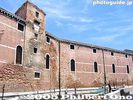
Arsenale アーセナレ会場The Arsenale is a huge, long building housing various art works by 49 artists.
アーセナレ会場は、細長い、とてもでっかい建物の中に個人のアーティストの作品が展示。Jul 23, 2005
|
|
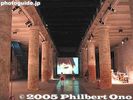
Inside the Arsenale アーセナレの中Jul 23, 2005
|
|

Falling Down LaughingSculpture seen on the way to the Italian Pavilion.Jul 23, 2005
|
|
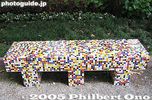
Park benchJul 23, 2005
|
|
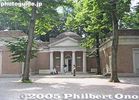
US Pavilion アメリカ館A few big rooms with white walls and paintings.
幾つかの大きい部屋に絵画。Jul 23, 2005
|
|
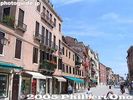
Near the ArsenaleAnother picture postcard street.Jul 23, 2005
|
|
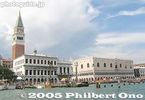
St. Mark's Square and Palazzo Ducale seen from the boatYou can also take a boat down the canal to go to the Venice Biennale site.Jul 23, 2005
|
|

Swiss Pavilion スイス館Jul 23, 2005
|
|
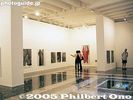
Japan Pavilion showing Miyako Ishiuchi 日本館内Most of the photos showed the personal effects of her deceased mother. Sticks of lipstick, clothing, kimono, etc. A video monitor on the floor showed her photos of Yokosuka.Jul 23, 2005
|
|
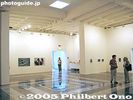
Japan Pavilion showing Miyako Ishiuchi 日本館内The pavilion was well attended.Jul 23, 2005
|
|
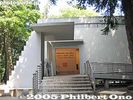
Japan Pavilion entrance 日本館の入口Jul 23, 2005
|
|
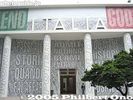
Italian Pavilion イタリア館The Italian Pavilion was the largest of all, featuring numerous exhibition rooms and numerous artists.
イタリア館が最大のパビリオン。Jul 23, 2005
|
|
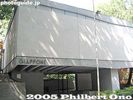
Japan Pavilion 日本館The Japan Pavilion is also in the Giardini site.
まったく地味な建物で、全然日本らしくありません。Jul 23, 2005
|
|
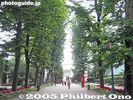
Venice Biennale at GiardiniThe Giardini site has country pavilions that are permanent buildings. Most of the major countries are represented by their own pavilions. This is the path to the Italian Pavilion, the largest one of all.Jul 23, 2005
|
|
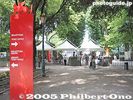
Entrance to Venice Biennale at Giardini ヴェネツィア・ビエンナーレの入口The Venice Biennale has two main sites: The lush and garden-like Giardini and the Arsenale, a short walk away. Other venues (mainly country pavilions) are scattered around Venice.
ヴェネツィア・ビエンナーレは、二つのメイン会場があって、一つはこの緑豊かなガーディニ会場。ここは、いろいろの国のパビリオンがある。イタリヤ館も日本館がここにあります。Jul 23, 2005
|
|
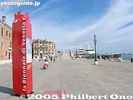
Venice Biennale markerJul 23, 2005
|
|
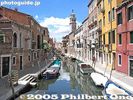
Venice ヴェネツィアは、どこへ行っても絵はがきの風景Everywhere you go in Venice looks like a picture postcard. A photographer's paradise. It's an impossible place. Too many things to see, and you can never see them all.Jul 23, 2005
|
|
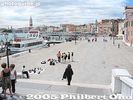
Venice waterfrontYou can walk along the waterfront to go to the Venice Biennale site.Jul 23, 2005
|
|
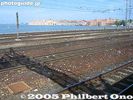
Train bridge to VeniceJul 23, 2005
|
|

Another trattoria in Genova (for dinner)Jul 23, 2005
|
|
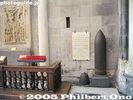
Dud bomb in San Lorenzo CathedralJul 23, 2005
|
|
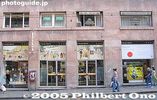
Ukiyoe at Genova Fnac BookstoreUkiyoe decorates the bookstore facing the main street.Jul 23, 2005
|
|

Dessert looking like the Japanese flag 日の丸のデザートA Japanese chef was working at this Italian trattoria which was excellent.Jul 23, 2005
|
|
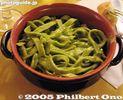
Pesto noodles, a specialty of Genova ペスト、ジェノバの名物Jul 23, 2005
|
|
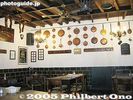
Inside the TrattoriaJul 23, 2005
|
|
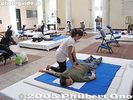
Shiatsu demonstrationThe other courtyard of the Palazzo Ducale had shiatsu demonstrations when we were there in July. During the exhibition, various Japan-related events and demonstrations were held such as taiko drumming and martial arts.Jul 23, 2005
|
|
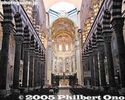
Inside San Lorenzo CathedralJul 23, 2005
|
|
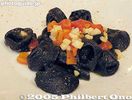
Jul 23, 2005
|
|

Posters at Genova Fnac BookstoreShot of bombed Nagasaki above one entrance.
山端庸介の長崎原爆写真も入口の上に。Jul 23, 2005
|
|
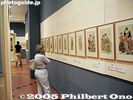
Ukiyoe exhibitionJul 23, 2005
|
|

San Lorenzo CathedralNear the Palazzo Ducale is this impressive cathedral. It couldn't fit within my 35mm lens.Jul 23, 2005
|
|

Trattoria where we had lunchJul 23, 2005
|
|
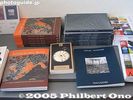
Exhibition catalogs 図録Order from PhotoGuide Japan's iStore.Jul 23, 2005
|
|

Posters at Genova Fnac BookstoreJul 23, 2005
|
|
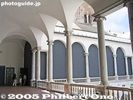
Entrance to ukiyoe exhibitionThis is the second floor (in Italy, it's called the first floor). And what we in Japan and the US call the 1st floor is the zero floor in Italy.Jul 23, 2005
|
|
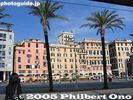
Genova waterfront 臨海部Genova has a picturesque waterfront, but it is cut right across by an elevated highway. This picture was taken from under the highway.
臨海部を散歩すると奇麗です。Jul 23, 2005
|
|
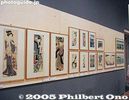
Ukiyoe exhibition 浮世絵展The ukiyoe collection came from the Chiossone Museum in Genova. The collection was amassed by Genova native and printing expert Edoardo Chiossone (1833-98 who was dispatched to Japan in 1875 to help Japan modernize its printing technologies (for printing money, etc.). During his 23 years in Japan, he acquired thousands of Japanese art works, especially ukiyoe which numbers 4,000 works. He never returned to Italy and died in Japan.
ジェノバ出身の彫刻師エドアルド・キヨッソーネ(1833-98)は、1875年大蔵省紙幣寮(のちの内閣印刷局)の求めに応じて来日。当時、日本の近代化を推進していた明治政府は外国から優れた技術者を「お雇い外国人」として招いており、キヨッソーネもその一人でした。日本近代印刷技術の礎を築きます。
キヨッソーネの日本滞在は24年にわたり、ついに祖国イタリアへ戻ることなく日本で生涯を終えますが、その間に日本美術に触発され約15,000点余りの美術品を収集するに至ります。なかでも浮世絵のコレクションは4,000点におよび、コレクションのなかでも最も充実したジャンルを形成し世界有数の浮世絵コレクションとして知られています。現在はジェノバ市立キヨッソーネ東洋美術館が所蔵されています。Jul 23, 2005
|
|
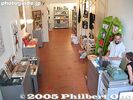
Ideart bookstore 図録の出版社であるIdeartの会場内売店(展示期間のみ)At the end of the poster exhibition hall, you enter this bookstore where you can buy all the exhibition catalogs, Japanese books (in Italian), and other neat things. This Ideart (publisher of the exhibition catalogs) bookstore operated only during this exhbition.Jul 23, 2005
|
|
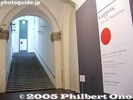
Upstairs to the textile and ukiyoe exhibitions 二階へJul 23, 2005
|
|
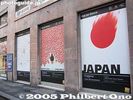
Posters at Genova Fnac Bookstore 市内のFnac本屋でPRThe Fnac Bookstore was generous enough to provide space on their outdoor walls to publicize the exhibition with replicas of the posters and photos.
フランスに本社がある大手本屋さんのFnacのジェノバ店で今回の展覧会をPRするために展覧会関係の巨大ポスターを店の壁に張ってくれました。Jul 23, 2005
|
|
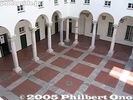
Palazzo Ducale courtyardJul 23, 2005
|
|

Textile exhibition catalog: Avvolti Nel Mito 織物展図録The textiles exhibited are shown in this catalog called "Avvolti Nel Mito" (Wrapped in the Myth) published by Ideart. Language is Italian. Order from PhotoGuide Japan's iStore.Jul 23, 2005
|
|

Entrance to ukiyoe exhibition 浮世絵展の入口Jul 23, 2005
|
|

Poster exhibitionJul 23, 2005
|
|

Entrance to ukiyoe exhibition 浮世絵展の入口Jul 23, 2005
|
|
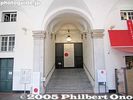
Upstairs to the textile and ukiyoe exhibitions 二階へ二階に織物展と浮世絵展が開催。Jul 23, 2005
|
|

Textile exhibition 織物展The textiles included kimono, noren curtains, and stenciled works.
着物、のれんなど展示された。Jul 23, 2005
|
|

Textile exhibition 織物展The textiles were exhibited in the best rooms of the Palazzo Ducale, including the chapel shown here. Beautiful frescoes decorated the walls and ceilings. What a contrast it was between the Japanese kimono and religious motif.
織物は宮殿の一番豪華な多数の部屋に展示された。Jul 23, 2005
|
|
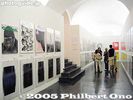
Poster exhibitionJul 23, 2005
|
|
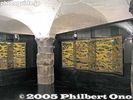
Folding screen 屏風もJul 23, 2005
|
|

Poster exhibitionJul 23, 2005
|
|

Poster exhibition catalog: Manifesti D'Artista 1955-2005 ポスター展の図録All 600 posters featured in the exhibition is reprinted in this thick catalog called "Manifesti D'Artista 1955-2005," published by Ideart. Language is Italian. Order from PhotoGuide Japan's iStore.Jul 23, 2005
|
|
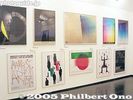
Poster exhibition 日本のポスター展In the huge, cavernous basement of the Palazzo Ducale, over 600 artistic Japanese posters were on display.
地下の凄い大きいホールになんと600枚のポスターが展示。Jul 23, 2005
|
|

Poster exhibitionA few expo posters. Even those poster designs which were not selected to be the official poster design were included in this exhibition.Jul 23, 2005
|
|
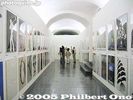
Poster exhibitionJul 23, 2005
|
|

Nagasaki exhibition catalog: Yosuke Yamahata-Nagasaki 山端庸介の新しい写真集兼図録This book shows all of Yosuke Yamahata's photos of Nagasaki, including the the 100+ photos of Nagasaki taken on the day after the bomb was dropped. The book includes a photo which has never been published in a book. Many detailed captions about the people identified in the photos are also included. Language is Italian. Order from PhotoGuide Japan's iStore.
山端庸介(1917−66)は陸軍報道カメラマンとして原爆投下翌日の長崎に入り,100枚以上の非常に貴重な歴史的の写真を撮った。長崎原爆資料館にも大きく展示されている。
過去に山端庸介の写真集が国内外に出版されたことあるけど、撮った写真の一部しか紹介されていませんでした。今回の新しい写真集は、山端庸介の長崎関係の全集の写真集とも言えます。本に出版されたことない写真もあります。1946年に撮った写真もあります。
そしてもう一つの大きな特徴は、説明文。写っている人物の当時の状況が結構詳しく語っています。10年前にNHKの取材班が山端庸介の原爆写真に写っている人物の名前とか所在を調べてまだ生きている何人かとインタービューが成功。それが、テレビ番組と本「NHKスペシャル 長崎 よみがえる原爆写真」になって大変感動しました。(テレビ番組も昨年8月に再放送された。)
そのNHK Special番組と本を参考してこの新しい写真集の写真説明文を書きました。イタリア語になっていますが、それぞれの写真を今まで外国語で詳しく説明されたことないのです。被爆者の感動的の話しをもっと海外にも伝いたいのです。 Jul 23, 2005
|
|
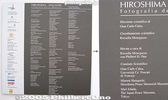
Panel for exhibition credits クレジットRossella Menegazzo and Philbert Ono were co-curators of the photo exhibition.
イタリア側でこの展覧会と図録のコーディネートをしているRossella Menegazzoさんは、ちょっと古い友人です。彼女は素晴らしい頑張りやさん。まだベネチア大学の学生のとき、夏休みに来日して僕と会いたいと言われて都内のピザ屋(彼女のバイト先)で初めて会ってあげた。
「卒業論文のため、日本人の写真家を研究したい!」と言い出してびっくりしたよ。「木村伊兵衛か土門拳、どっちがいいと思う?」と聞かれても答えないよ。(結局、土門拳になった。)しかし、参考書はほとんど日本語で英語の参考書も(僕のHP以外)非常に少ないと指摘した。でも3年後、なんとイタリア語で土門拳の論文が完成された。これは、イタリア国内で史上初の日本人写真家の論文である。ということは、彼女が日本語も勉強して読めるようになったの。凄いでしょう。
で、話しがまだ続く。彼女の草分けの論文のおかげで大学の後輩も二人、三人が日本の写真家の論文を書いたりしているの。その後輩たちにも僕ができる限り参考書など送っています。(向こうは喜ぶね。)でも、その学生さんが日本人の写真家を論文のためにインタービューしようとすると拒否されることがある(例えば奈良原 一高)。それを聞くと僕はとても恥ずかしい気持した。一方、森山大道の論文を書いた学生が本人とのインタービューが成功した。彼女がとても喜んでいたそうです。(大道さん、ありがとう。) Jul 23, 2005
|
|
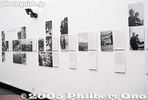
Nagasaki photos by Yosuke YamahataJul 23, 2005
|
|

Nagasaki photos and origami corner 折り紙コーナーVisitors were encouraged to fold a paper crane.Jul 23, 2005
|
|

Nagasaki photos by Yosuke YamahataJul 23, 2005
|
|
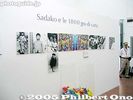
Sadako and her origami cranesBased on a story of a girl named Sadako who was exposed to the atomic bomb in Hiroshima. She was told that if she folded 1,000 paper origami cranes, she would be granted a wish. But she died at age 12 even after folding over 1,000 paper cranes.Jul 23, 2005
|
|
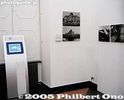
Video monitor showing HiroshimaJul 23, 2005
|
|
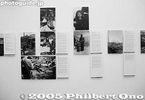
Nagasaki photos by Yosuke Yamahata. 写っている人物の当時の状況が詳しく語っています。In 1995, NHK, Japan's leadning TV station, successfully identified some of the survivors pictured in Yamahata's photographs. They even interviewed some of them who were still living. They aired a special TV program and published a book about the extraordinary stories of the survivors.
Those stories have been summarized into Italian for the photo captions in this exhibition.
写っている人物の当時の状況が詳しく語っています。10年前にNHKの取材班が山端庸介の原爆写真に写っている人物の名前とか所在を調べてまだ生きている何人かとインタービューが成功。それが、テレビ番組と本「NHKスペシャル 長崎 よみがえる原爆写真」になって大変感動しました。(テレビ番組も昨年8月に再放送された。)
そのNHK Special番組と本を参考してこの新しい写真集の写真説明文を書きました。イタリア語になっていますが、それぞれの写真を今まで外国語で詳しく説明されたことないのです。被爆者の感動的の話しをもっと海外にも伝いたいのです。 Jul 23, 2005
|
|
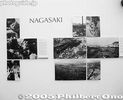
Nagasaki photos by Yosuke Yamahata 山端庸介が原爆投下翌日の写真を撮ったYosuke Yamahata was an Imperial Army photographer who was ordered to go to Nagasaki to photograph the after effects of the atomic bomb. He and two others, a writer and an artist, arrived in Nagasaki the morning after the bomb was dropped. Yamahata went on to capture over 100 extraordinary images of the devastation, people who survived, people helping the wounded, and the inevitable corpses.
山端庸介(1917−66)は陸軍報道カメラマンとして原爆投下翌日の長崎に入り,100枚以上の非常に貴重な歴史的の写真を撮った。長崎原爆資料館にも大きく展示されている。 Jul 23, 2005
|
|

Entrance to Hiroshima-Nagasaki photo exhibition 広島・長崎原爆写真展の入口Jul 23, 2005
|
|

Hiroshima panorama photos by Shigeo HayashiThe exhibition room was divided in half by this panel. The right side was for Hiroshima, and the left side for Nagasaki.Jul 23, 2005
|
|
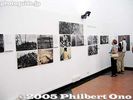
Hiroshima photos 広島原爆写真Jul 23, 2005
|
|
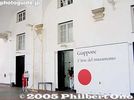
Museum shop entrance and tanabata display.This was taken on July 9, 2005 which is close to Tanabata.Jul 23, 2005
|
|
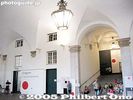
Inside the Palazzo DucaleAs soon as you enter, this is what you see. The lower left is the entrance to the bookstore, and the stairs go up to the textile and ukiyoe exhibition.Jul 23, 2005
|
|
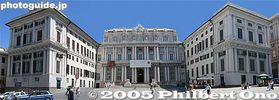
Palazzo Ducale, site of the Japan art exhibition in 2005 (Giappone - L'Arte del mutamento). (展覧会の会場)From April to Aug. 2005, a huge Japanese art exhibition was held at this former palace. It exhibited ukiyoe, posters, textiles, and photographs. The photo exhibition, curated by Rossella Menegazzo and myself (Philbert Ono), showed images of the Hiroshima and Nagasaki atomic bomb aftermath.
2005年4月〜8月にイタリアのジェノバ市で日本の美術展覧会が開催され、浮世絵、着物、アートポスターと写真が展示されました。 写真展は、60周年のため広島・長崎原爆関係の写真が紹介されました。会場は、立派なドゥカーレ宮殿でした。Jul 23, 2005
|
|

About Genova ジェノバの紹介Genova (or Genoa) is a port city on the west coast of Italy. It is the birthplace of Christopher Columbus. For 2004, it was designated as the European City of Culture. From Milan, it takes about 90 min. to reach Genova.
ジェノバは、イタリアの北の西海岸にある港街です。コロンブスの出身地でもあります。ミラノから電車で約1.5時間かかります。
Jul 23, 2005
|
|

Close-up of sign above the entrance to Palazzo DucaleJul 23, 2005
|
|

No Smoking on Street路上喫煙はやめましょう - This is "Rojō kitsuen wa yamemashō." It means please don't smoke while walking on the street.
Place: Street corner near a train station in Tokyo.May 28, 2005
|
|
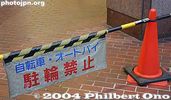
No Bicycle/Motorcycle Parking駐輪禁止 - "Chūrin kinshi" in red characters mean two-wheeled vehicles cannot park here. In blue characters, it says "jitensha" (bicycles) and "ōtobai" (motorcycles and motor scooters).
Place: Street corner near a train station in Tokyo.May 28, 2005
|
|

Beware of Wild Monkeys野生の猿にご注意 - "Yasei no saru ni go-chūi." "Yasei" means wild, and "saru" is monkey. Japan has a substantial population of wild monkeys which can be very aggressive in foraging for food, especially at tourist spots. They often steal food (sweets, etc.) from tourist shops and commonly grab any paper or plastic bag that you are carrying. If you see wild monkeys, you should not feed them nor carry any bags with your hands.
The sign also says "We cannot be responsible for any accidents caused by wild monkeys."
Place: Mt. Hiei Driveway, Kyoto.May 28, 2005
|
|
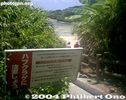
Beware of Jellyfishハブクラゲに注意しよう! - "Habu kurage ni chūi shiyō." Beware of jellyfish. In Okinawa, "habu kurage" (Chiropsalmus quadrigatus) is a type of poisonous jellyfish whose venomous sting can cause death.
Place: Taketomi island, Okinawa.May 28, 2005
|
|
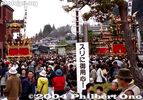
Watch Out for Pickpockets!スリに御用心 - Another human animal to watch out for. "Suri ni go-yōjin!" means watch out for pickpockets! "Suri" means pickpocket, and "go-yōjin" is like "chūi."
Place: Takayama Festival, Gifu Pref.May 28, 2005
|
|
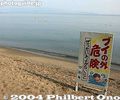
Do not Go Beyond the Buoysブイの外 危険 - It reads "Bui no soto kiken" which means "Dangerous to go beyond the buoy." The buoys in this case are the brightly-colored floating balls that mark the outer boundary of the safe swimming area. The water is usually too deep or the waves are too dangerous beyond this boundary. Almost all swimming beaches in Japan have some kind of outer boundary.
Place: Northern Lake Biwa, Shiga Pref.May 28, 2005
|
|
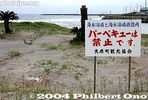
No BBQバーベキューは禁止です - The characters in red say, "barbecue wa kinshi desu." Having a barbecue is prohibited.
Place: Ohara beach, Chiba Pref.May 28, 2005
|
|
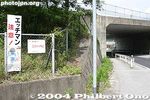
Beware of Flashers!エッチマン注意! - Besides watching out for poisonous snakes, jellyfish, and wild monkeys as you saw in the previous images, there's one last wild animal to watch out for: the flasher. Apparently, this country neighborhood has had a flasher (a person who shows his genitals) so often that they put up this sign to warn female passers by.
The sign reads "H man chūi!" "H" is for "hentai" meaning pervert. "Man" is man, and you know what "chūi" means.
Place: Country road, northern Shiga Pref.May 28, 2005
|
|
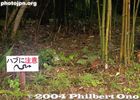
Beware of Habu Snakesハブに注意 - "Habu ni chūi." Finally we see the third most common word on warning signs: Chui, meaning "beware of" or "watch out for." Habu is a species of poisonous snake common in Okinawa where this picture was taken.
Place: OkinawaMay 28, 2005
|
|

Take Off Your Shoes土足厳禁 - It says "Dosoku genkin" or footware prohibited. "Dosoku" literally means dirty feet, and "genkin" is like "kinshi," meaning prohibited. So we have to take off our footwear before going up the stairs to see the second floor of this museum.
In most places, it will be obvious that you have to take off your shoes before entering the castle, museum, temple, etc. At the entrance hall, you will see a shelf to store shoes and indoor slippers lined up on the floor.
Place: Azuchi, Shiga Pref.May 28, 2005
|
|
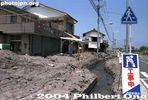
Under Construction工事中 - The sign reads "Kōji-chū" meaning "under construction." You see this often at Japanese Web sites as well.
Place: Near Mt. Fugendake, Nagasaki Pref. (Note that the year stated in the image indicates the year the photo was first published, not the year when the picture was taken.)May 28, 2005
|
|

Danger! Do not Jump in River危険!川へ飛び込まないでください。- The red characters read "Kiken!" (Danger!), and the black characters say "Kawa e tobi komanaide kudasai." "Kawa" is river, "tobi komi" is to jump or dive in.
This at the famous Dotonbori canal in central Osaka where it is a popular place for fanatical baseball fans to jump in whenever the local baseball team (Hanshin Tigers) wins big. The river is quite polluted and littered with trash (though recently cleaned up by the city). During the Soccer World Cup in 2002, several hundred people jumped in the water when the Japan team won a crucial game.
Place: Dotonbori, Osaka.May 28, 2005
|
|

No Swimming遊泳禁止 - By now you must be getting sick of seeing this word "kinshi." Well, it's certainly not a pleasant word since it limits your freedom. But it also serves to keep you safe. The kanji in red reads "yūei kinshi" meaning "swimming (and playing in the water) prohibited." Below in black reads, "Koko wa suieijō dewa arimasen." This is not a place for swimming.
Place: Lake Biwa at Otsu, Shiga Pref.May 28, 2005
|
|

Go Slow徐行 - The sign on the right says "Jokō" meaning go slow (when boarding or disembarking from the ferry). You may see this at construction sites as well.
Place: Onomichi, Hiroshima Pref.May 28, 2005
|
|
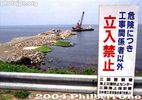
Do Not EnterThis sign is similar to the preceding one. The middle column of characters has the word "kōji" (工事) which means construction. So the sign means, "Danger: No entry except for authorized construction workers."
Place: Mikuni-cho, Fukui Pref.May 28, 2005
|
|
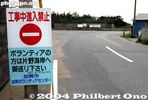
Under Construction - Do Not Enter工事中 - Another variation of "Do not Enter." The red characters read "Kōji-chū shinnyū kinshi" meaning no entry during construction operations. The "No entry" traffic symbol is also a tell-tale sign. You usually see this symbol at the entrance of a one-way road (if you face the wrong direction).May 28, 2005
|
|
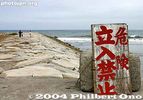
Danger, Keep Out危険 立入禁止 - The kanji characters on the right say "kiken" meaning danger. The big characters on the left say "tachi-iri kinshi" meaning "entry prohibited." Remember the word "kiken" (危険). It is one of the three most common words on warning signs in Japan. Another one is "kinshi" (禁止). If you see it, be aware that something is prohibited.
Place: Ohara beach, Chiba.May 28, 2005
|
|

Do not Enter立入禁止 - Another "entry prohibited" sign or "tachi-iri kinshi" in red kanji characters. On the right, the characters read, "kankei-sha igai" meaning "unauthorized persons."
Place: Lake Biwa at Otsu, Shiga Pref.May 28, 2005
|
|

No Photography撮影禁止 - The sign reads "Satsuei kinshi." "Satsuei" means to take photos, and "kinshi" means "prohibited." The "No photo" symbol also makes it clear.
On Japanese warning signs, the three most common words you will see are "kinshi" (禁止), "kiken" (危険), and "chui" (or "go-chui") (注意). They respectively mean "prohibited," "danger," and "beware of."
Place: World PC Expo in Makuhari Messe in Chiba.May 28, 2005
|
|

No Tripods三脚使用禁止 - The bold characters read, "Sankyaku shiyō kinshi" meaning tripod use is prohibited. The sign further explains that since tripods hinder the view of other spectators, they are not allowed except in the press photographers' box.
The kanji characters for tripod consists of "san" for three (the 3 horizontal lines make it obvious), and "kyaku" which means legs.
Place: Tsurugaoka Hachiman Shrine (during the Yabusame Festival), Kamakura, Kanagawa Pref.May 28, 2005
|
|

No Tripods and Monopods, unless...三脚 一脚 - This sign says "Sankyaku, ikkyaku go-shiyō no kata wa, kyokasho (2,000 yen) ga hitsuyō desu." Since you learned the characters for "tripod" in the preceding image, you should also know the characters for monopod, called "ikkyaku," literally "one leg."
This sign is a warning and a money-making scheme. It says that you cannot use a tripod or monopod in this garden unless you pay 2,000 yen to obtain a permission slip.
Place: Heian Shrine Garden, Kyoto.May 28, 2005
|
|

No Photography撮影禁止 - Another sign that reads (top to bottom) "Satsuei kinshi." "Satsuei" means to take photos, and "kinshi" means prohibited. At this Shinto shrine, you are not allowed to photograph inside the main shrine building housing the altar.
Place: A shrine in Kyoto.May 28, 2005
|
|
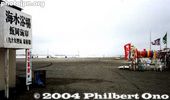
Swimming Beach海水浴場 - The sign on the left reads "Kaisui Yokujō." "Kaisui" literally means ocean water, and "yokujō" is bathing place.
Place: Kujukuri beach, Chiba Pref.May 28, 2005
|
|

This Week's Recommendations今週のおすすめ - The top string of characters say "Konshū no Osusume." "Konshū" is this week, and "osusume" is recommendation. You might see such a signboard in train stations. It publicizes major events and travel to those places. In this case, the Tenjin Matsuri (festival) in Osaka, the Hasu Matsuri (Lotus Flower Festival) in Kusatsu, Shiga Pref., and the Yosakoi Hyogo Festival in Kobe.
Place: A JR train station in the Kansai area.May 28, 2005
|
|

Stone Buddha石仏 - The characters read "Sekibutsu." "Seki" is stone, "butsu" is Buddha. This small stone buddha was one of several embedded on a series of stone steps leading to the castle tower.
Place: Azuchi Castle Ruins, Shiga Pref.May 28, 2005
|
|
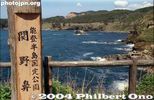
Quasi-National Park国定公園 - On this sign post, the smaller characters on the right read "Noto Hant? Kokutei K?en." "Noto Hantō" means Noto Peninsula, and "Kokutei Kōen" means Quasi-National Park. The word "hantō" literally means half island.
A quasi-national park is like a second-tier national park. The top-ranking national parks called "Kokuritsu Kōen" are defined to be natural areas of beauty rated as world-class. Meanwhile, the quasi-national park is not regarded as "world-class," but it is still beautiful enough to be designated as a national park. The large characters on the left say "Sekinohana," the name of this scenic coast.
There are over 50 quasi-national parks in Japan. In addition, there are prefectural parks designated by the local governor. These are areas of natural beauty recognized by the prefecture, but are not as magnificent as national and quasi-national parks.
Place: Noto Peninsula, Ishikawa Pref.May 28, 2005
|
|
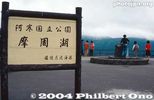
Lake Mashu湖 - The large characters in the middle is "Mashū-ko" or Lake Mashū. The third character "ko" means lake. Names of lakes almost always ends with this word. Lake Mashū, one of the cleanest and most transparent lakes in Japan, is within a national park called "Akan Kokuritsu Kōen" as indicated by the small characters at the top.
Place: Lake Mashū, HokkaidoMay 28, 2005
|
|

Fortune-telling Noteおみくじ - "Omikuji" is one way Shinto shrines make money. You pay a small fee and you receive a small paper note with a fortune inside.
Place: Heian Shrine, KyotoMay 28, 2005
|
|

Eight Scenic Views of Omi近江八景 - This sign post indicates that this place is a Scenic Spot ("Meishō" in the red characters). The scenic spot is one of the Eight Scenic Views of Ōmi or "Ōmi Hakkei." And this Ōmi Hakkei is Night Rain at Karasaki.
Ōmi (also spelled Ohmi) is the former name of Shiga Pref. During Japan's feudal era, there were a few hundred fiefs each having a name. These fiefs were eventually consolidated into the current 47 prefectures. Thus, each prefecture consists of one or more old feudal domains. The names of these old fiefs are commonly used in present-day place names within the prefecture.
Famed woodblock artist Hiroshige visited Ōmi and drew these eight scenic places immortalizing the term "Ōmi Hakkei," an idea that came from a lake in China. There are other similar names such as "A Hundred Views of Mt. Fuji" made famous by woodblock print artists.
Place: Karasaki at Lake Biwa, Shiga Pref.May 28, 2005
|
|

Peace平和 - "Heiwa" is another word you will hear often, especially in Hiroshima, Nagasaki, and Okinawa. The first two characters on the left read "Heiwa" followed by "ishiji" (cornerstone). (Ishiji is normally pronounced "ishizue," but they call it "ishiji" here.)
Place: Cornerstone of Peace, Okinawa. This is a memorial park with many black slabs of stone inscribed with the names of the 200,000 people (all nationalities) who died during the Battle of Okinawa during World War II.May 28, 2005
|
|

Castle城 - "Shiro" (or oshiro) means castle, but when it is appended to a name of a castle, it is pronounced "jō." Such as Kaminoyama-jō in the above example.
Also, if you're Okinawan, you would be familiar with this kanji because many Okinawan names have it. For example, Oshiro, Miyashiro, Kaneshiro, etc. The kanji can also be pronounced "gi" as in Miyagi (think Karate Kid movie).
Place: Kaminoyama Castle, Yamagata Pref.May 28, 2005
|
|
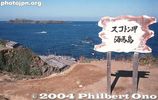
Cape岬 - Cape is "misaki" in Japanese. The sign says "Sukoton Misaki," or Cape Sukoton.
Place: Rebun island, HokkaidoMay 28, 2005
|
|
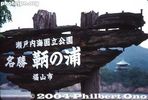
National Park国立公園 - As in many countries, Japan has areas of natural beauty designated as national parks called "Kokuritsu Kōen" (the last four characters on the sign's top line). The entire top line of characters reads, "Seto Naikai Kokuritsu Kōen." Seto Naikai is the Seto Inland Sea between Shikoku and Honshū islands. It is one of the first three areas in Japan to be designated as a national park in 1934. There are over 25 national parks in Japan. (See list at: http://www.env.go.jp/en/jeg/nps/pamph/index.html).
In the middle line (left to right), are two small characters "Meishō" or "Scenic Spot." The large characters is the place name, Tomonoura. Below this in small characters is Fukuyama-shi, the name of the city.
Place: Tomonoura (Fukuyama), Hiroshima Pref.May 28, 2005
|
|
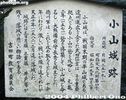
Castle Ruins城跡 - This is "jōseki," a kanji compound using "shiro" (see preceding image). The title's bottom two characters is "jōseki" meaning castle ruins. The top two characters is "Koyama," the name of this particular castle.
Place: Koyama Castle, Shizuoka Pref.May 28, 2005
|
|

Bicycles and Motor Scooters自転車/原付 - The left kanji characters (top to bottom) say "jitensha" (bicycles). On the right, it says "gentsuki" which is short for "gendōki-tsuki jitensha" (原動機付き自転車)or motor scooters.
Place: Island in the Seto Inland Sea.May 28, 2005
|
|
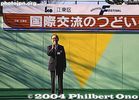
International国際 - Another word all overseas tourists in Japan should know: "Kokusai," the first two large, white characters on the left. It means international. It is followed by "kōryū" meaning exchange or interchange, and "tsudoi" or event.
Place: TokyoMay 28, 2005
|
|

Cherry Blossom Festival桜まつり - In big black characters is "Sakura Matsuri." "Sakura," of course, means cherry blossoms, and "matsuri" is festival. Above that in small characters is "Sumida Kōen" (Sumida Park) which is famous for cherry blossoms in Tokyo.
Place: Sumida Park, TokyoMay 28, 2005
|
|
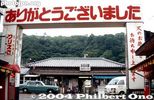
Thank YouIn big, red hiragana characters at the top is "Arigato gozaimashita." If you cannot even read this, it means you are totally illiterate in Japan. This big gate faces the pier where passengers get off the ferry and head for the train station right beyond this gate.
Place: Hama-Kanaya Station, Chiba Pref.May 28, 2005
|
|
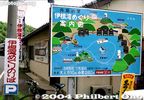
Bay Cruise Map伊根湾めぐり案内図 - The large white kanji characters at the upper left say "Ine-wan Meguri Annai-zu" or Ine Bay Cruise Guide map. When the word "meguri" follows the word for bay (wan) or any body of water, it means sightseeing boat cruise. This map, near the pier, shows the route of the sightseeing boat.
Place: Ine (Tango Peninsula), Kyoto.May 28, 2005
|
|

Bus Stopバス - At the top, the red katakana characters at the top says "basu" or bus. The word "noriba" (のりば)or "stop" is often appended to "bus." Below "Basu" is the name of the bus stop (Sumoto I.C.). "I.C." stands for "interchange" (on an expressway). Below that is the name of the bus companies stopping there (Tokushima Bus and Awaji Kōtsū).
Place: Awaji island, Hyogo Pref.May 28, 2005
|
|
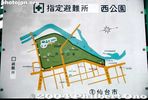
Emergency Refuge Area指定避難所 - What might look like another sightseeing map is actually a guide to the nearest emergency refuge area. It is usually a large park, and it is mainly for major earthquakes. The kanji characters at the top read "shitei hi'nan-jo" or designated evacuation area. The name of the park (Nishi Kōen) is further to the right.
Place: Sendai, Miyagi Pref.May 28, 2005
|
|

Cycling Roadサイクリング ロード - Above the bicycle symbol in green, it reads "Cycling Road." (Above that is "Shimanami Kaid?.") It is obvious that this is a path for bicycles.
Place: Island in the Seto Inland Sea. The Shimanami Kaidō is a roadway connecting several bridges spanning across a few islands in the Seto Inland Sea from Imabari in Ehime Pref., Shikoku to Onomichi in Hiroshima.May 28, 2005
|
|

You Are Here現在地 - Sightseeing and parking map. The "P" stands for "parking lot." Toward the bottom, the red kanji characters say "Genzai-chi" (You are Here).
Place: Minakuchi Castle, Shiga Pref.May 28, 2005
|
|

Public Toilet公衆便所 - Pronounced "kōshū benjo." And "WC" means "water closet." This is outside in the park. The men's/ladies' room inside a department store, etc., is usually called "otearai" (お手洗い).
Place: Sumida River fireworks, Tokyo.May 28, 2005
|
|
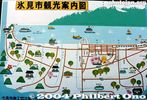
Sightseeing Map観光案内図 - You will often find a large sightseeing map right outside the train station. At the top, the last four kanji characters read "Kankō Annai-zu" meaning sightseeing guide map. Such maps are inexact and you cannot tell how far things are. The first three characters is the name of the city (Himi-shi).
Place: Himi, Toyama Pref.May 28, 2005
|
|

Store Your Bags一時預り所 - "Ichiji azukari-sho" means makeshift baggage storage place. This facility has been provided to accommodate the bags of the flood of visitors coming to see a big festival near this train station. The available coin-operated lockers are not enough. The "ichiji" can also mean one o'clock, but in this context, it means temporary.
The sign on the right says, "Ichinichi ikko 400 yen" and "Eigyō jikan 8:00 - 17:00." It costs 400 yen to store one bag, and the storage hours are as stated. The place requires you to come back for your stored bag by 5 pm. One advantage of the coin-operated lockers is that you don't need to come back for your bag by 5 pm.
Place: Shimo-Suwa Station, Nagano for the Onbashira Festival.May 28, 2005
|
|

Welcome!ようこそ - The red hiragana characters read "Yōkoso!" (Welcome!). The bottom characters say "Mother Bokujō e" (to Mother Farm).
(Note that all the Japanese kanji characters you see on signs will read either from top to bottom or from left to right.)
Place: Mother Farm, Chiba.May 28, 2005
|
|
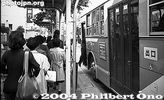
Exit出口 - The kanji characters beside the door says "Deguchi," meaning Exit. In this case, this door is only for exiting, not entering. (You enter the bus through the front door.) You will see "Deguchi" at train/subway stations as well.
Place: Bus stop in Tokyo.May 28, 2005
|
|

Train Station駅 - The kanji characters read "Sannomiya Eki." The last character "eki" is what you will always see in train and subway station names.
Place: Sannomiya Station, Hyogo Pref. (10 days after the Great Hanshin Earthquake in Jan. 1995).May 28, 2005
|
|

Tourist Information Center観光案内所 - "Kankō Annai-sho." A string of kanji characters any tourist in Japan should remember. "Kankō" means sightseeing, "annai" means guide, and "sho" is place. You can find sightseeing maps and pamphlets, sometimes in English.
Place: Local museum in the countryside.May 28, 2005
|
|

Photo Paper印画紙 - Pronounced "ingashi," it means photo paper, the kind you use in the darkroom. This is an ad from a camera magazine published in 1940. It advertises Sakura Photo Paper. The company was called Konishiroku (see bottom characters), the forerunner of Konica.May 28, 2005
|
|
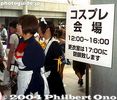
Costume Player Area, Tokyo Big Sight会場 - The sign says "Cosplay Kaijō" meaning Costume Player area (where you can pose for photographers). They are allowed to use it from 12 noon to 4:00 pm. And they even provide a dressing room (closes at 5 pm) for these costumers who attract visitors to the comic book show held there. Taken at Tokyo Big Sight.May 28, 2005
|
|

Self PrintingThe top characters says "Self Print" which means you can print photos yourself. On the red sign, it says that you can print from your digital camera or camera phone. However, when you look at all the little notes, there are so many things to keep in mind that you'd better ask the sales clerk to help you operate this machine. Before sticking in your memory card, better back up the data first.May 28, 2005
|
|

Commemorative Photo SignMt. Aso in Kumamoto Pref. This is a signboard graciously provided for "ki'nen shashin." You can stand behind this sign which says "Commemoration of Climbing Aso" with the date chalked in below it.May 28, 2005
|
|
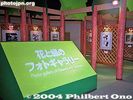
Photo Galleryフォトギャラリー - This is obviously "photo gallery." Above it is "Hana to Midori"(花と緑)meaning flowers and greenery. This was at the Lake Hamana Pacific Flora expo in 2004.May 28, 2005
|
|

Disposable Cameras写るんです - Next to a coffee machine on the left, this is a vending machine selling single-use cameras (or film with lens).
FujiFilm was the first to introduce these cameras (in 1986). Their single-use camera brand is called "Utsurundesu" (the red characters on the machine) meaning "it takes photos." It comes from the word "utsuru" which means capture (an image). It is also the first character in the word "shashin(写真).
Other film makers came up with their own cutsey names. These cameras, though, are on its way out as digital cameras and camera phones dominate.May 28, 2005
|
|

DPEDPE - Stands for Development, Printing, and Enlargement. We often find this at neighborhood photofinishers, but never at pro labs. The kanji after "DPE" is "uketsuke." The same characters as in the preceding picture.May 28, 2005
|
|
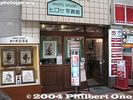
Portrait Studio写真館 - "Shashinkan" is portrait studio. In Japan, they call it "photo studio" which in real English could mean a rental studio used by a pro photographer to photograph products, models, etc. Also notice the "55-min." photo lab next door.May 28, 2005
|
|

55-min. PhotosThe term "one-hour photo" was once popular, but it seems "55 minutes" has taken over. Below the number "55" is the kanji for "fun" or minutes. Below that is "shiage" meaning "finished in." Thhe red katakana characters on the right says "Digital camera prints."May 28, 2005
|
|

Photo Lab Counter受付 - The last two characters on the large sign above is "uketsuke" meaning reception desk. This is a film processing counter inside a large camera store. The katakana characters before uketsuke say "Color Print." It's where to go to get your film processed.May 28, 2005
|
|

Portrait Studio Services写真館 - "Shashinkan" (the last three characters on the bottom line) is portrait studio. This sign is outside a portrait studio advertising its basic services.
From top to bottom:
Ki'nen shashin (記念写真): Literally "commemorative photo" which could be any kind of portrait--of family, children, etc., for any kind of occasion like coming-of-age day, graduation, etc.
Shutchō shashin (出張写真): Location shoot. A photographer can be dispatched to any location for any type of shoot such as wedding receptions, children's track meets, etc.
Shōmei shashin (証明写真): ID photos.May 28, 2005
|
|
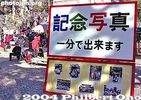
Commemorative Photos記念写真 - The top characters says "Ki'nen shashin." Ki'nen shashin is perhaps the most common photo term in Japan. Literally, it means "commemorative photo," but it has no real English equivalent.
It almost always show a person(s) you know and it's usually posed. They include family, friends, and yourself. It is a visual keepsake to record good memories. The picture answers the who, what, and where questions on a personal level such as travel photos, a meeting with the mayor, or at a friend's birthday party. It can be a casual snapshot or formal portrait.
This sign invites customers to have their photo taken by a pro photographer in front of this famous temple. The second line says "Ippun de dekimasu" meaning ready in 1 minute.May 28, 2005
|
|

Photo Booth証明写真 - "Shōmei shashin." This is another very common photo term in Japan. You often see it at camera shops, photofinishers, and on these photo booths.
This booth is emblazoned with "Shōmei shashin" in red characters. It means ID photos (for resumes, driver's license application/renewal forms, and passports). Of course, people often use it for fun too.May 28, 2005
|
|

Photo ServicesSign outside a portrait studio and camera shop.
From top to bottom:
1st line from top (red characters): Irrelevant (ignore it)
2nd line: Studio satsuei (portraits taken in the studio) and Shōmei shashin (ID photos).
3rd line: Irrelevant
4th line: Camera, yōhin (supplies), and album
5th line: Digital eizō shori (Digital-editing services)May 28, 2005
|
|

Taxi fares from Shin-Iwakuni StationMay 12, 2005
|
|
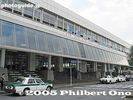
Shin-Iwakuni Station 新岩国駅May 12, 2005
|
|
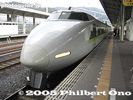
Shin-Iwakuni StationMay 12, 2005
|
|
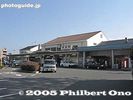
Iwakuni Station 岩国駅May 12, 2005
|
|
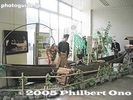
Shin-Iwakuni StationMay 12, 2005
|
|
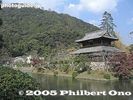
May 12, 2005
|
|
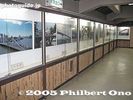
Inside Iwakuni CastlePictures of famous bridges in Japan.May 12, 2005
|
|
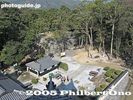
In the background, you can see the stone foundation of the main tower where it was originally located. The current castle tower is a reconstruction and slightly south of the original location, making it more visible on the mountain.May 12, 2005
|
|
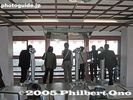
Castle observation deckMay 12, 2005
|
|

Modern museum inside Iwakuni CastleIt is a museum.May 12, 2005
|
|

The original castle was built by Lord Kikkawa Hiroie in 1608, after 8 years of construction. However, the castle had to be dismantled in 1615.May 12, 2005
|
|

Close-up of Kintai-kyo BridgeMay 12, 2005
|
|
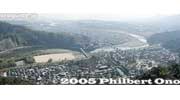
View from Iwakuni CastleKintai-kyo Bridge is visible.May 12, 2005
|
|

May 12, 2005
|
|
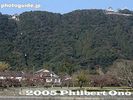
Gondola on left, castle on right.The castle is a short hike from the gondola station.May 12, 2005
|
|

Iwakuni CastleMay 12, 2005
|
|

Kintai-kyo Bridge and Iwakuni CastleMay 12, 2005
|
|
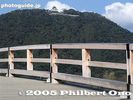
The Kintaikyo Bridge originally led to the castle's front entrance.May 12, 2005
|
|
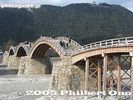
May 12, 2005
|
|
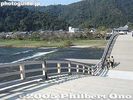
May 12, 2005
|
|
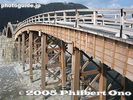
May 12, 2005
|
|
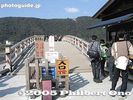
Entrance to Kintai-kyo Bridge. Admission charged.May 12, 2005
|
|
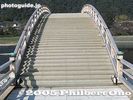
May 12, 2005
|
|

May 12, 2005
|
|
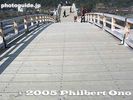
May 12, 2005
|
|
| 71466 files on 284 page(s) |
 |
 |
281 |  |
 |
|